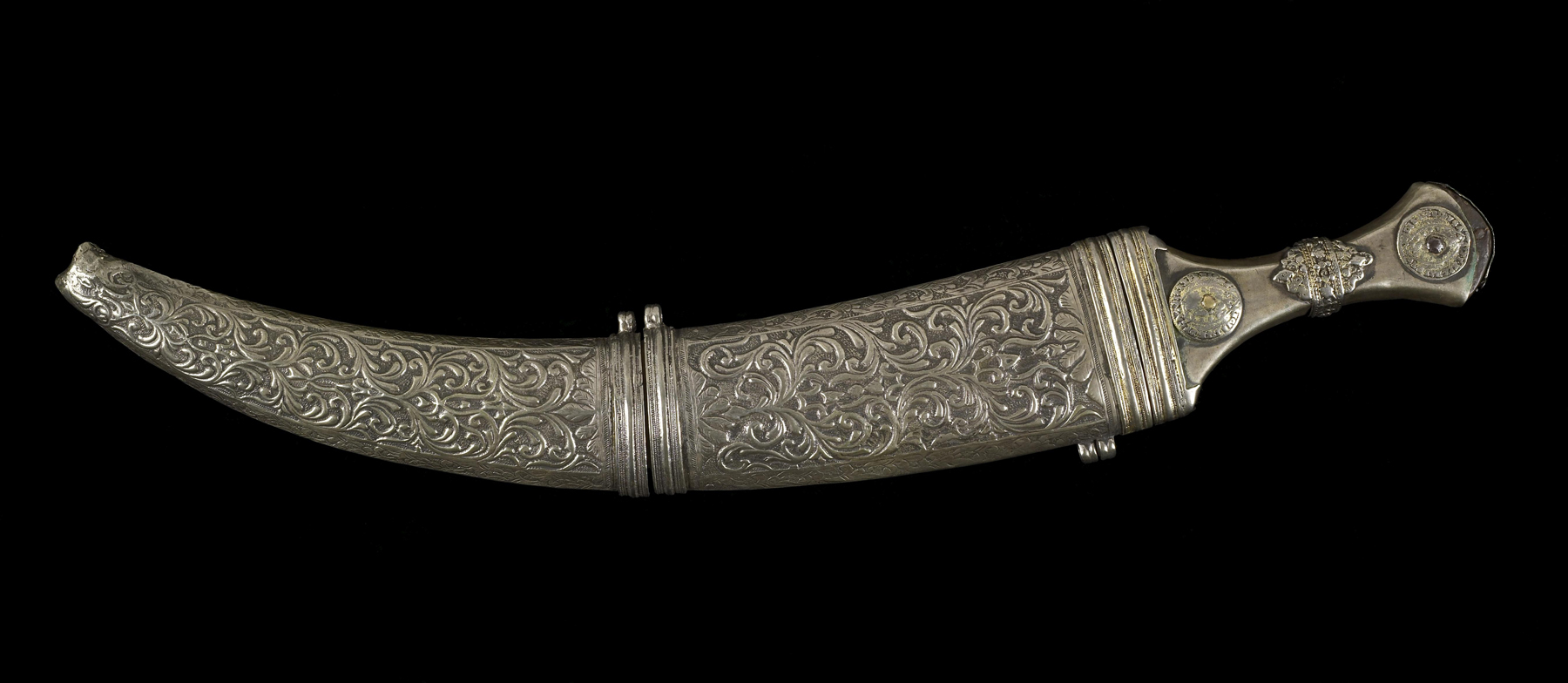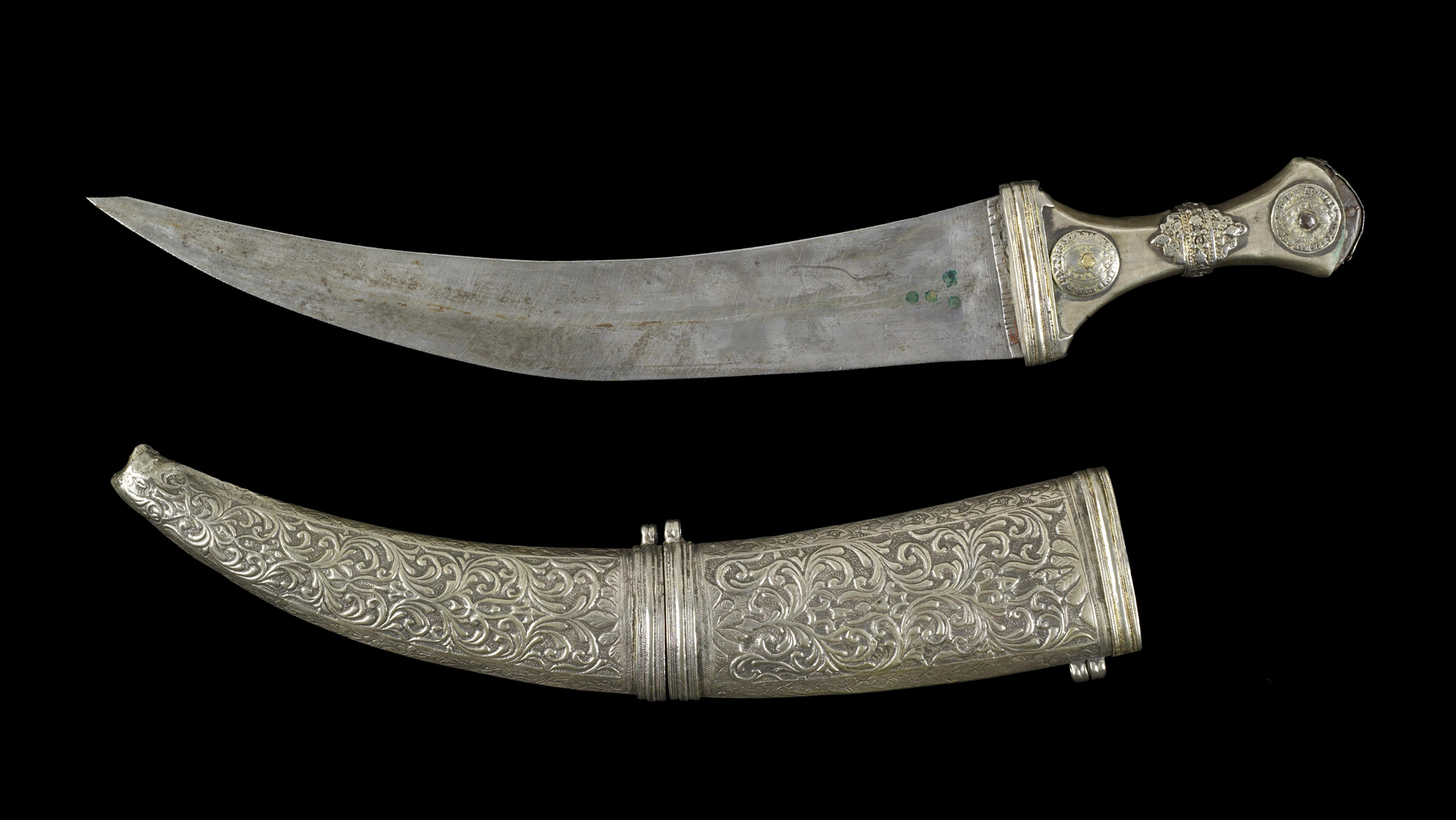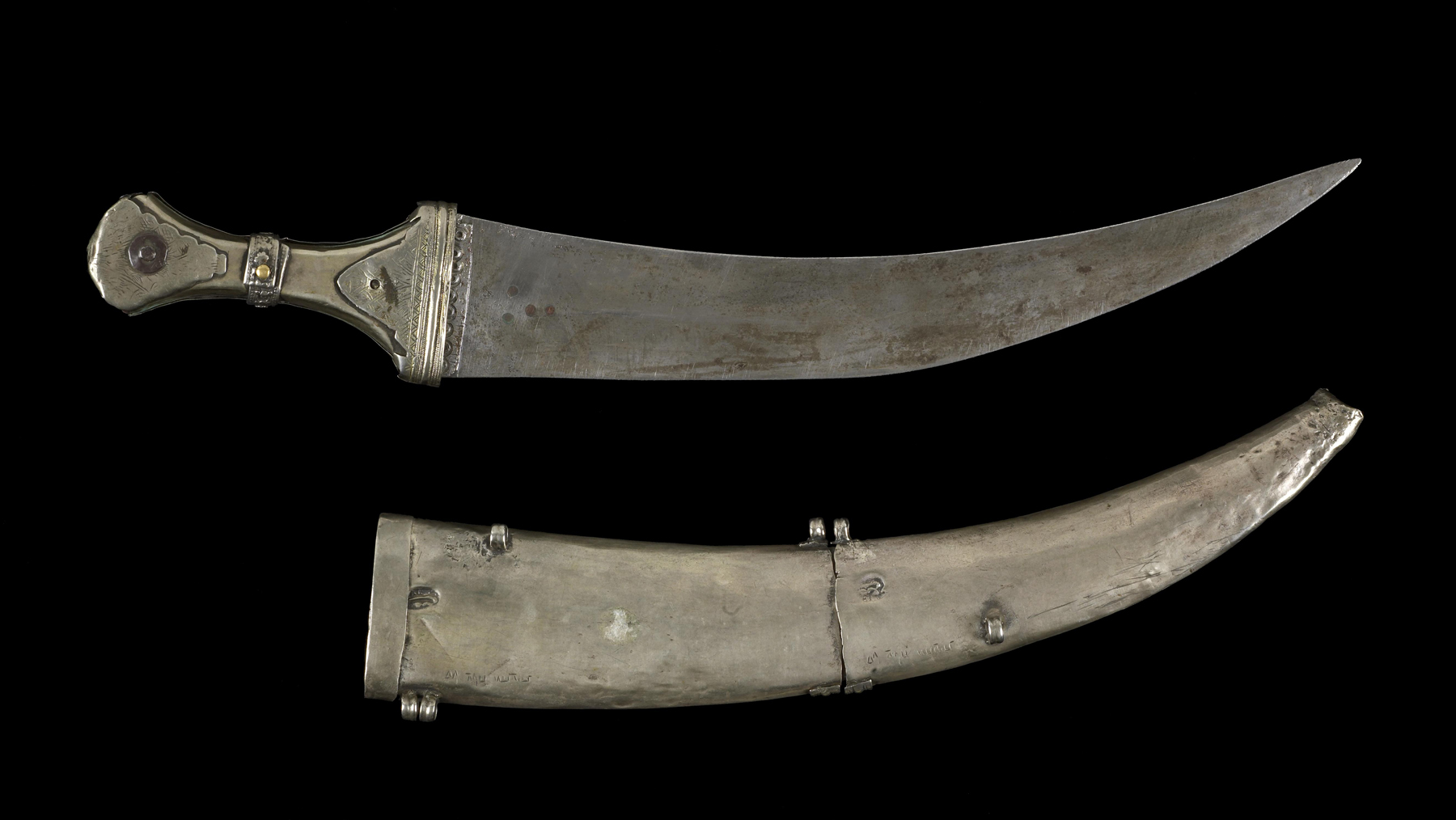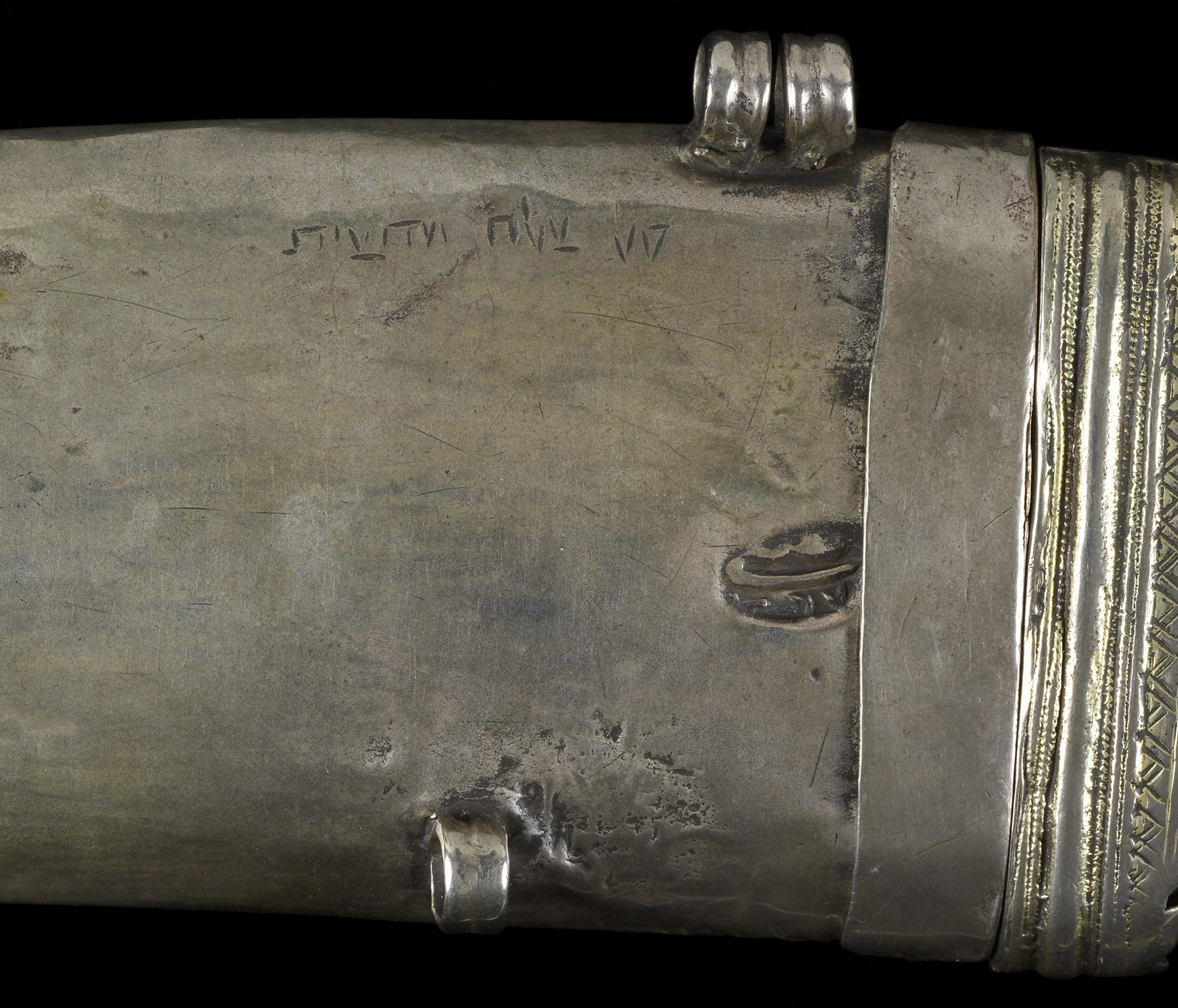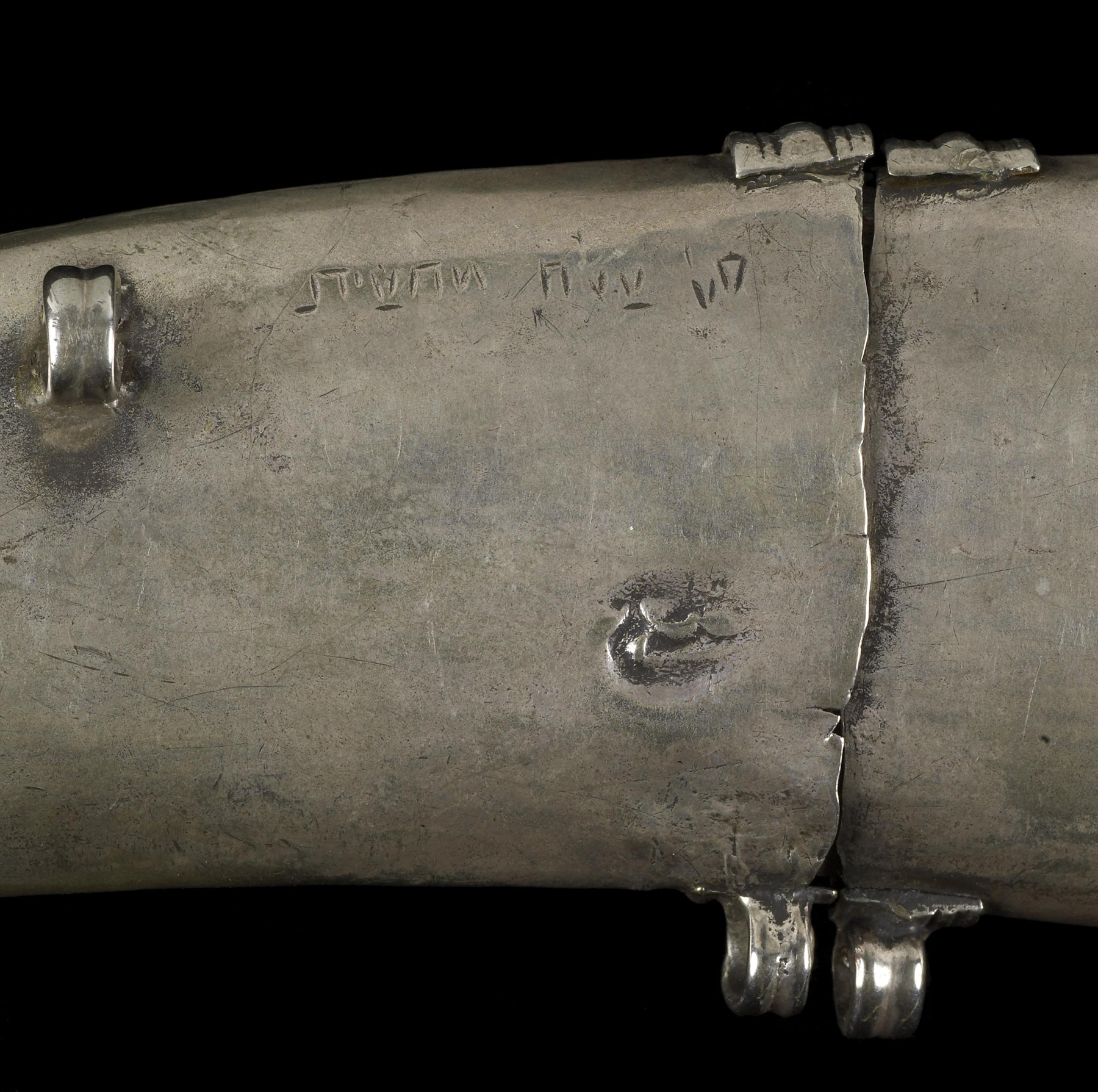Thuma (Dagger) and Sheath
Although their blades were often of inferior quality, Yemeni daggers had beautifully ornamented sheaths with elaborate silverwork, as seen here. These daggers, which symbolically highlighted male courage and strength, played an important role in certain dances by men. Daggers were positioned in belts made of colorful fabric. In addition to being silversmiths, Yemeni Jews excelled as producers of textiles and were known to weave the belts that held the daggers.
The dagger is inscribed in Arabic nusfi 1267, meaning "half" and 1267 (the date); it is inscribed in Hebrew mahasit (half). The date may be associated with the reign of al Mutawakkil "Ali (AH 1267) or that of al-Mansur Ahmad (AH 1266–67).
Inscription
Provenance
Provenance (from the French provenir, 'to come from/forth') is the chronology of the ownership, custody, or location of a historical object. Learn more about provenance at the Walters.
Mr. Derek Content and Mr. Benjamin Zucker [Zucker Family Trust] London and New York, by purchase; Walters Art Museum, 2010, by gift.
Exhibitions
| 2016-2017 | Treasures of Yemenite Silverwork. The Israel Museum, Jerusalem, Jerusalem. |
| 2012-2013 | Diadem and Dagger: Jewish Artisans of Yemen. The Walters Art Museum, Baltimore. |
Geographies
Yemen, between Taizz and Sana'a (Place of Origin)
Measurements
Overall L: 22 1/16 x W: 16 1/8 in. (56 x 41 cm); L of blade: 11 x W of blade: 18 7/8 in. (28 x 48 cm)
Credit Line
Joint gift to the Walters Art Museum, Baltimore, and the Israel Museum, Jerusalem, by Mr. Derek Content and Mr. Benjamin Zucker in honor of Mrs. Amanda Content and Mrs. Barbara Zucker, 2010
Accession Number
In libraries, galleries, museums, and archives, an accession number is a unique identifier assigned to each object in the collection.
In libraries, galleries, museums, and archives, an accession number is a unique identifier assigned to each object in the collection.
51.1451

